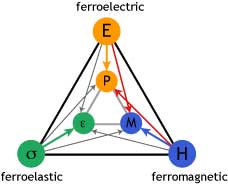Here are some of our current projects:
1. Point of Care Diagnostics

In many diseases, specifically cancer, early screening techniques are invasive and their risks outweigh their potential benefits. In many types of cancer patients tend to be asymptomatic prior to metastasis, and current early screening techniques have not proven effective at reducing mortality. Therefore, in addition to being able to locally treat cancerous cells, we also need to be able to non-invasively detect the presence of these cells prior to metastasis.
Our research seeks to overcome the limitations of current diagnosis and treatment modalities through the development of stimuli-responsive polymer-based nanocomposite materials that allow for point of care engineering. Point of care engineered materials provide clinicians with tools that can readily and efficiently diagnose and treat patients at their location, without relying on sending out blood or tissue samples for complex and time-consuming analysis that requires specialized technicians. By eliminating the need for highly specific and costly equipment, this class of diagnostic materials can be easily implemented worldwide, in both developed and developing countries.
2. Theranostics
 Theranostics, or therapeutic diagnostics, are a unique class of materials that combine the ability to diagnose a disease with the ability to also treat that disease. For example, magnetic nanoparticles can be functionalized with therapeutics and targeting agents. Magnetic nanoparticles are particularly useful in the field of nanomedicine, due to their ability to act as magnetic resonance imaging (MRI) contrast agents. By adding appropriate targeting ligands to magnetic nanoparticles they can be engineered to selectively bind with growing tumors, allowing radiologists to make more accurate diagnoses. The usefulness of magnetic nanoparticles extends beyond enhanced MRI contrast. If an alternating magnetic field is applied to magnetic nanoparticles they generate heat via Néel and Brownian relaxations, also known as magnetic hyperthermia. Once the nanoparticles have reached the desired location, they can be heated to release attached biomolecules and/or to heat and kill the cancerous tumor cells, which are less robust than non-malignant cells. Our research focuses on developing new synthetic strategies for exploring the magnetic properties of these nanoparticles, and their ability to be implemented into real-world medical applications.
Theranostics, or therapeutic diagnostics, are a unique class of materials that combine the ability to diagnose a disease with the ability to also treat that disease. For example, magnetic nanoparticles can be functionalized with therapeutics and targeting agents. Magnetic nanoparticles are particularly useful in the field of nanomedicine, due to their ability to act as magnetic resonance imaging (MRI) contrast agents. By adding appropriate targeting ligands to magnetic nanoparticles they can be engineered to selectively bind with growing tumors, allowing radiologists to make more accurate diagnoses. The usefulness of magnetic nanoparticles extends beyond enhanced MRI contrast. If an alternating magnetic field is applied to magnetic nanoparticles they generate heat via Néel and Brownian relaxations, also known as magnetic hyperthermia. Once the nanoparticles have reached the desired location, they can be heated to release attached biomolecules and/or to heat and kill the cancerous tumor cells, which are less robust than non-malignant cells. Our research focuses on developing new synthetic strategies for exploring the magnetic properties of these nanoparticles, and their ability to be implemented into real-world medical applications.
3. Multiferroics
 Multiferroic materials are materials that exhibit at least two, and sometimes all three, types of ferroic ordering in the same phase. The ferroic orderings are ferroelectric, ferromagnetic and ferroelastic and relate to the type of applied field required for the material to exhibit a spontaneously polarized state. The figure below shows these types of ferroic ordering, where an applied electric, magnetic or stress field induces a spontaneous electric polarization, magnetization or strain, respectively. However, in multiferroics additional levels of ordering can result from the coupling between the different types of ferroic ordering. For instance, in a magnetoelectric multiferroic an applied magnetic field can be used to control the polarization, or an applied electric field could be used to control the magnetization.
Multiferroic materials are materials that exhibit at least two, and sometimes all three, types of ferroic ordering in the same phase. The ferroic orderings are ferroelectric, ferromagnetic and ferroelastic and relate to the type of applied field required for the material to exhibit a spontaneously polarized state. The figure below shows these types of ferroic ordering, where an applied electric, magnetic or stress field induces a spontaneous electric polarization, magnetization or strain, respectively. However, in multiferroics additional levels of ordering can result from the coupling between the different types of ferroic ordering. For instance, in a magnetoelectric multiferroic an applied magnetic field can be used to control the polarization, or an applied electric field could be used to control the magnetization.
Composite multiferroics typically consist of alternating layers of piezoelectric and magnetostrictive materials. Piezoelectric and magnetostrictive materials undergo a shape change in an applied electric or magnetic field, respectively. The coupling in these materials is mechanical in nature. In our lab we will seek to develop novel synthesis and processing techniques for composite multiferroics with enhanced properties.
